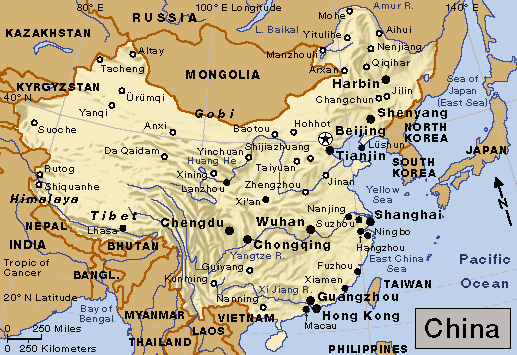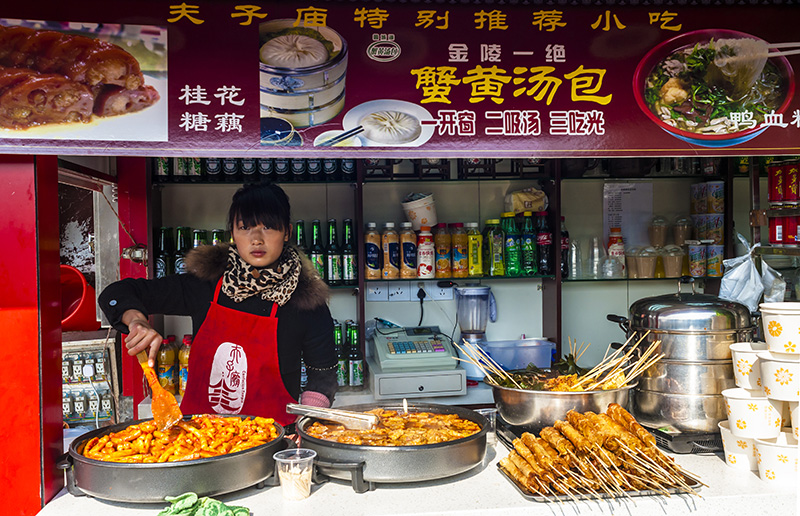Nanjing, << nahn jihng >> (pop. 6,900,000), also spelled Nan-ching or Nanking, is an important center of industry, transportation, government, and culture in east-central China. The city lies on the Yangtze River, about 200 miles (320 kilometers) from the East China Sea. Nanjing is the capital of Jiangsu Province and was once the capital of all China.

The city.
Government office buildings, museums, and two stadiums are in the center of Nanjing. Commercial and residential areas lie outside the central area. Most of Nanjing’s people live in apartment buildings or in apartments above shops. The remains of an ancient defensive wall surround the built-up areas of Nanjing.

Most of Nanjing’s people travel by bicycle or public bus. However, some people drive cars to and from work.
Wharves that can handle oceangoing ships line the banks of the Yangtze River, which borders Nanjing on the west. East of the city are Xuanwu Lake, a tourist attraction with several islands; and Zijin Mountain, the site of an astronomical observatory. The tomb of Sun Yat-sen, who helped establish the Republic of China in 1912, lies on the mountain. Nanjing’s educational institutions include Nanjing University, engineering colleges, and a medical school.
Economy.
Nanjing has hundreds of manufacturing plants. Leading products include cement, fertilizers, iron and steel, porcelain, textiles, and trucks. Nearby mines provide iron ore for the iron and steel plants. Many farming families live in towns and villages near Nanjing. The farmers raise cotton, rice, wheat, vegetables, and other crops.
Railroads connect Nanjing to Beijing, the capital of China, in the north and to Shanghai in the east. Numerous ships dock at the wharves of the city. A double-deck bridge that extends 3 miles (5 kilometers) across the Yangtze River serves both trains and motor vehicles.
History.
People have lived in what is now the Nanjing area since about the 400’s B.C. Early settlers chose the site because of its location near a river and some roads. During several periods in the A.D. 200’s to 500’s, the city served as the capital of various local Chinese dynasties (series of rulers of the same family). The Ming dynasty gained control of most of China in 1368. The first Ming ruler made Nanjing—which means southern capital–the seat of the dynasty. In the early 1400’s, the Mings moved the capital to Beijing—which means northern capital.
In 1853, rebels called the Taipings seized Nanjing from the Manchus, who ruled China at that time. The Taipings made the city the capital of their empire. The Manchus regained Nanjing in 1864.
In 1912, Chinese revolutionaries overthrew the Manchus. The new rulers met in Nanjing and founded the Republic of China. From 1928 to 1937, the city served as the capital of the republic. Japanese forces captured Nanjing in 1937 and burned much of the city. They murdered or raped many of the city’s residents in what became known as the Nanking Massacre or the Rape of Nanking (see Nanking Massacre). Nanjing again became China’s capital in 1946, the year after Japan’s surrender ended World War II.
The Chinese Communists took over China in 1949. They made Beijing the capital, but Nanjing remained a center of regional government. During the 1950’s, 1960’s, and 1970’s, the Communists built hundreds of manufacturing plants in Nanjing. The city quickly grew into a major industrial center.
